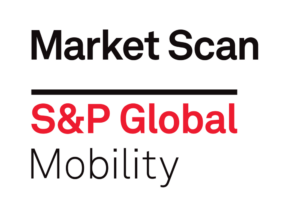In automotive retail, pricing is complex. OEMs set prices based on how well they think their vehicles will sell, then establish rebates and incentives to bridge gaps between their sales expectations and consumer interest. High-quality, real-time data from a single source – that allows OEMs to see their market position and competitors’ incentives and rebates – helps them gain a leg up as they manufacture vehicles in an increasingly competitive industry.
Table of Contents:
Maintaining a One-Stop-Shop for OEM Pricing & Payment Strategy
Pricing begins at a product’s origin, considering materials, labor, market demand, and competitive positioning. In the automotive industry, automakers produce vehicles to be sold across the globe and need to consider manufacturing cost as one of many inputs for determining how to price their vehicles. To grow market share, they also need to understand their competitive positioning, relying on pricing and payment data to analyze how they stack up alongside their competition.
As technology has evolved, the industry has become more sophisticated, and so too has the complexity of sales incentive programs. OEMs need access to precise, comprehensive data and insights to help them navigate this dynamic competitive landscape. Fully understanding their position in the market and how consumers’ expectations may differ by location gives OEMs a leg up on the competition and takes the guesswork out of their pricing and incentive decisions. With the right data in hand, they can focus their time and efforts on building out the best strategies to meet their sales goals.
Pricing in a Competitive Context
OEMs establish the manufacturer’s suggested retail price (MSRP), which is consistent across the country and does not change nearly as often as other automotive pricing components, such as rebates and incentives. As the baseline from which a consumer’s monthly payment is calculated, it’s essential that OEMs get the MSRP right based on customer expectations, market conditions, and similar offerings from competitors. If OEMs are too aspirational in their pricing, the market will demand costly rebates and incentives to bring the monthly payment down, so it better aligns with market values.
Ultimately, customers look at vehicles’ content and price, comparing similar offerings from a variety of OEMs and deciding which package is the best for them. Data and analytics surrounding these offerings help OEMs understand the vehicle’s monthly payment in relation to the competition.
The data we offer at Market Scan enables OEMs to assess their competitive positioning in real time by providing payment data currently available in the market. We can also provide insights down to the trim level, enabling OEMs to fine tune their strategy across a wide selection of models and series. This is especially important, as more than 80% of consumers have a car payment and make their decision around monthly payment rather than sticker price. A difference in trim-level cost may be the difference between losing and retaining a customer, so it’s imperative that OEMs make pricing and payment decisions unique to every configuration.
Limited Data Leads to Pricing Bottlenecks
Anyone who likes sports understands that you can’t predict a team’s performance based on its previous year’s successes and challenges. This approach doesn’t account for new players, retirements, ongoing practice in the off season, changes in coaching staff, updated team resources and a myriad of other factors that change from season to season. Likewise, OEMs can’t count on historical data alone to position their vehicles competitively. While historical data has its place, real-time market data is much more valuable in reflecting the current market and providing valuable insight to guide multi-million-dollar OEM decisions.
Market Scan data is updated daily and provides lease and finance incentive details and vehicle payments down to the zip-code level. This location-specific data is hugely beneficial to OEMs looking to run market-specific programs. While a vehicle’s MSRP is consistent across the U.S., competition, inventory levels, regulations, and financing preferences can vary greatly.
For example, if BEVs are selling well in New Jersey due to a large cash-on-the-hood incentive and tax exemption—but are sitting on dealer lots in Montana due to an underdeveloped infrastructure and lacking EV rebates—an OEM can develop incentives specifically to solve the issue for dealerships in Montana to help improve their sales pace. Our data can help OEMs develop pricing and payment strategies designed to avoid over or under incentivizing the market to achieve sales and share goals.
OEMs can also use Market Scan data to verify competitor movements at any time of the month. For example, if sales begin to slow in a specific geography, or feedback from the field is that the competition has increased lease support on a specific model, OEMs can use Market Scan solutions to validate this and the current payment competitiveness in minutes, down to the zip-code level.
Without this single data source, OEMs face bottlenecks as they try to pull together as much information as possible to inform their decision making.
Improving Operations by Pulling from One Data Source
Some things just work better when they’re consistent. Imagine memorizing numerous shoe sizes so you can shop at different stores or making sure every electronic device you buy has a plug compatible with your outlets. When it comes to data, a single, high-quality source that has standardized information OEMs need to analyze vehicle pricing and incentives ensures a smooth and streamlined pricing process.
Time OEMs spend pulling data from a variety of sources could be spent strategizing. Also, when finding information to compare competitive positioning, variations in payment structure make it difficult to truly compare apples to apples. Since much of the data is often incomplete, assumptions must be made, limiting the accuracy and speed of the research.
In a business environment where many departments must come together to understand their overall position in the marketplace and make major decisions, having clarity in pricing contributes to a simpler, more effective overall strategy. Not only does Market Scan aggregate all the necessary data points needed to calculate accurate payments, but the calculation engine is also normalizing the data and checking qualification criteria and compatibility rules.
The End Game – Dealership Success
Price is the single largest determinant of demand. Ultimately, the pricing decisions made by OEMs play a significant role in whether dealerships can offer vehicles competitively, which in turn helps brands increase loyalty and conquest new buyers. Consumers keep dealerships open, keep OEMs in business, and dictate the market, so it’s essential OEMs provide dealerships with pricing that’s going to ensure success for them and their customers.
Book a demo today to see how Market Scan can help improve your customer experience through transparent, precise pricing.

